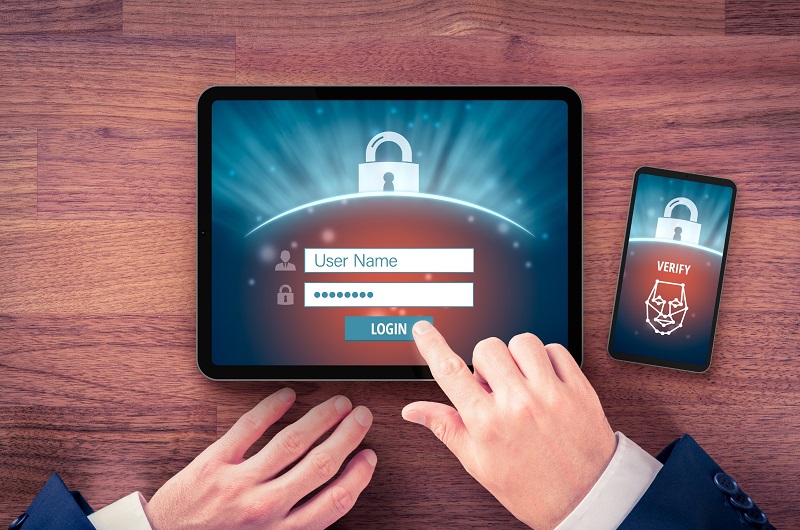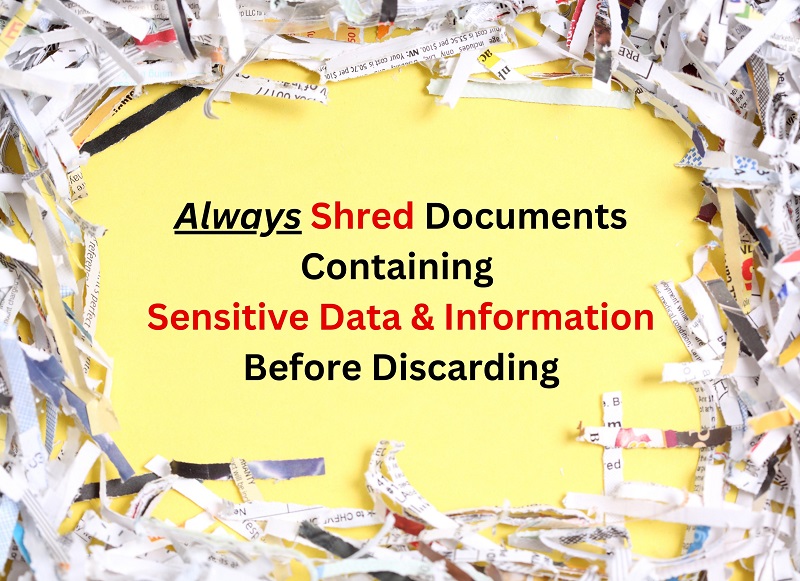The joy of owning a home can be quickly overshadowed by the alarming reality of identity theft – a growing and constantly evolving crime that often targets homeowners.
In an age where personal information is often just a click away, criminals are exploiting new and sophisticated methods to access valuable confidential details. These lawbreakers aren’t merely opportunistic burglars. They are sophisticated, calculating predators who can jeopardize not only your financial stability but also the emotional security tied to your home.
Read on to learn more about the murky world of identity theft specific to homeowners and homebuyers, exploring the unique risks involved, with actionable ways to detect and safeguard against these predators.
Table of Contents
- Identity Theft Risks that Target Homeowners
- 10 Homeowner Strategies to Prevent Identity Theft
- Conclusion: Remain Vigilant and Help Educate Others
Also see:
Identity Theft Risks that Target Homeowners
In the broad crime category of identity theft, homeowners face many unique challenges. A single transaction can involve numerous parties, complex paperwork, and the exchange of substantial personal information.
Let’s explore some of these unique risks:
- Mortgage and Loan Modification Scams
- Homebuying Phishing Attacks
- Fake Real Estate Listings
- Personal Data Exposure
- Unsolicited Requests
- Caller ID Spoofing
Also see:
Mortgage and Loan Modification Scams
Criminals may pose as legitimate mortgage brokers or lenders to deceive prospective homebuyers, as well as homeowners looking to refinance, into sharing personal information. The end goal of many of these thieves is to forge documents and use stolen identities to secure loans, leaving unsuspecting homeowners with massive debts and shattered credit scores.
With refinancing scams, criminals may open lines of credit or loans using your property’s equity as collateral. This can potentially drain your home equity and leave you with debt that isn’t even yours.
Homeowners facing risk of foreclosure are especially susceptible to these types of mortgage-related identity theft scams, as they are in a more vulnerable financial position and need to act quickly.
Also see:
Homebuying Phishing Attacks
Though all consumers are at risk of phishing attacks, homebuyers have become specific targets involving wire transfer payments during the homebuying process, also referred to as Escrow Wire Fraud or Mortgage Wire Fraud. This is an example of “corporate identity theft” as the scammer fraudulently impersonates a known legitimate corporate entity, such as a licensed real estate agent or representative of a mortgage escrow company, when interacting with their intended victim, the homebuyer.
![]()
This type of scheme involves infiltrating a homebuyer’s or real estate agent’s computer via an email phishing attack, which tricks a recipient into clicking on a malicious link or opening a harmful attached file. In either case, a software virus can then be loaded that enables remote access and viewing into the activities of one’s computer.
Once this clandestine power is established, the hacker will be in a position to read emails and watch as homebuyers conduct business with banks and other financial institutions either online or through email. At this point, the monitoring criminal can them impersonate one of these banking or real estate entities by sending an email that requests a wire transfer payment.

The most common scenario for escrow wire fraud is for the homebuyer to receive an urgent email a few days before the closing date that states there has been an error. The email will then provide new instructions for wiring the closing costs. The homebuyer will then be led to believe that instead of paying in person they will need to act expediently by paying the funds by wire transfer or run the risk of losing the home.
Fake Real Estate Listings
With an increasingly large percentage of buyers, sellers and renters conveniently conducting real estate business online, more criminals have figured out ways to exploit unsuspecting individuals through fake real estate listings. Scammers have become adept at creating convincing listings that appear genuine in tandem with credible-looking contact information.

To make fake listings appear authentic, fraudsters employ various techniques, such as using stolen photos and copied descriptions from legitimate listings. These scammers also often claim to be out of the country, making it difficult for potential buyers or renters to meet them in person.
Though this article is focused on identity theft schemes that target property owners, homeowners can often revert to being short-term renters when relocating to a new area or undergoing extensive remodeling projects. Consumers looking for rental properties are especially prone to falling victim to fake real estate listings, as they are eager to submit valuable personal information as part of an online application process.
Homebuyers who consider properties that are FSBO (For Sale By Owner) need to be especially careful, as there are several related scams that can be executed by this type of real estate criminal. In terms of identity theft, an FSBO fraudster, using a fake listing, can “offer” attractive financing to an unsuspecting out-of-town homebuyer.
If the prospective buyer takes this bait, they will end up handing over everything necessary to steal one’s identity. Keep in mind that real estate con artists are also adept at gaining access to empty properties owned by “absentee landlords” in order to conduct fraudulent showings.
Also see:
Personal Data Exposure
Discarded documents and mail related to homeownership can be a treasure trove for identity thieves. Careless handling of paperwork or oversharing on social media can put personal information at risk.

Also see:
Unsolicited Requests
Given the broad areas of responsibilities and contractual obligations inherent to homeownership, homeowners are a lucrative target of scammers who can take advantage of many persuasive communication channels: phone calls; in-person visits; direct mail; email; flyers; business cards; social media posts; online ads; and texts.

Since reputable companies have legitimate reasons for asking homeowners for personal information, it can be easy to fall victim to deceptive requests by disreputable entities. Before providing any sensitive personal information, always research the credibility of the requesting party and ask why this information is needed. Trust your instincts, as well.
An example of this type of identity theft, is when a homeowner is targeted by a fraudulent solar panel company. The intended crime is not to overcharge customers for faulty or inferior solar panels, instead it is to acquire and exploit personal information on the auspices of selling and installing a new solar system.
Also see:
Caller ID Spoofing
Caller ID spoofing is when a person receives an incoming call that shows falsified caller ID information, in order for a fraudster to impersonate a legitimate person. Though phone number spoofing is not a full-blown identify theft scheme, it can be an easy way to get unsuspecting persons to share valuable personal information unwittily. This tactic is also often used by many criminals operating in the real estate space in order to interject themselves into the procedural stream of a real estate transaction.
A Message from the FCC: Spoofing – Don’t Hang On, Hang Up
Also see:
10 Homeowner Strategies to Prevent Identity Theft
Homeownership brings joy and responsibility in equal measure, and one key obligation is safeguarding against identity theft. A wide range of homeownership responsibilities and high-dollar real estate transactions expose homeowners to unique risks, making vigilance essential.
Here are 10 tactics that will help homeowners protect themselves against identity theft threats:
- Use Identity Theft Protection Software
- Enable Credit Monitoring
- Incorporate Secure Passwords and Two-Factor Authentication
- Be Vigilant at Detecting Email Phishing Attacks
- Increase Cybersecurity Measures
- Rely on Legal Protections and Insurance
- Handle and Dispose of Personal Documents Safely & Responsibly
- Be Extra Careful When Making Escrow Payments
- Protect and Monitor Your Postal Mail
- Do Not Provide Your Information Easily & Continually Educate Yourself
Also see:
1. Use Identity Theft Protection Software
Using identity theft protection software provides continuous monitoring and timely alerts for signs of identity theft. By tracking personal information across various platforms and databases, this software detects breaches and even assists in recovery, making it a valuable investment for homeowners.
![]()
Examples of such software include Aura and IDShield. Comparing both services is crucial to learn about their pros and cons, so you can make the right choice.
Also see:
2. Enable Credit Monitoring
Regular monitoring of credit reports is crucial for detecting any suspicious activities or unauthorized changes. Homeowners should subscribe to credit monitoring services that provide alerts, enabling swift action against potential fraud.
Also see:
3. Incorporate Secure Passwords and Two-Factor Authentication
Creating strong passwords for every online account and enabling two-factor authentication, where possible, adds crucial layers of security. These measures greatly reduce the risk of unauthorized access to personal and financial accounts related to homeownership.

4. Be Vigilant at Detecting Email Phishing Attacks
Crafty email phishing scams target homeowners with emails or messages that appear legitimate, tricking them into revealing personal information, login credentials, or financial details.

A common tactic used by email phishing scammers is to imitate a valid corporate email address and domain names by subtly transposing a letter or number, e.g.:
- Substitute a number one (“1”) with a lower-case letter L (“l”), or vice versa
- Substitute a zero (“0”) with an upper-case letter o (“O”), or vice versa
- Substitute a lower-case letter L (“l”) with an upper-case letter i (“I”), or vice versa
- Substitute a lower-case letter M (“m”) with a lower-case letter R (“r”) and a lowercase letter N (“n”), next to each other (“rn”), or vice versa
Transposed letters and numbers can also be used in tandem with these additional tactics to obfuscate fake email addresses and false website domain names further:
- Adding generic business terms to a legitimate company name, e.g. appending “mortgage applications” to a company named “Acme” to form: acmemortgageapplications.com
- Using subtle misspellings that look like legitimate abbreviations, e.g. appending “inc” to a company named “Acme” to form “aceminc.com”
- Using top-level domains (TLDs) that are more prone to phishing (e.g. .com; .cn; .tk; .ml; .xyz) instead of more reputable domain types (e.g. .org; .gov; .edu)
To guard against interacting with fake corporate entities, such as when needing to make an online payment or wire transfer, make sure that all email addresses and other information, such as bank account numbers, are exact to the character.
Closely inspecting email addresses and embedded links (by hovering with the cursor over a link) of suspicious and highly important emails will also help protect you against phishing attacks of all types.
Never be rushed to interact with a suspicious email (e.g. do not click on a link, open an attached file, or reply to the sender without first investigating carefully). Thoroughly re-read the text of the email objectively, paying close attention to generic information versus accurate personalized information. At first glance, some fraudulent emails may appear to be speaking directly to you, when in fact the text may not contain any personalized or valid account details.
Trust your gut, and Google key phrases contained in the email to see if other persons have already written about this type of deceptive phishing scam.
Another safe approach is to call the corporate entity whom you suspect is being impersonated through a confirmed valid phone number and inquire about the email in question.
Also see:
5. Increase Cybersecurity Measures
Basic cybersecurity measures, such as firewalls, antivirus software, and secure Wi-Fi connections, create barriers against cyber thieves. Regular updates and responsible browsing habits enhance online safety. These measures are also vital for keeping your kids safe online.
![]()
Also see:
6. Rely on Legal Protections and Insurance
Understanding legal rights and investing in identity theft insurance can be essential safeguards. This specialized insurance can cover expenses associated with recovering from identity theft, offering substantial peace of mind.
Keep in mind that with many of your existing banking relationships (e.g. checking accounts; credit cards; etc.), you have built-in protection. However, it is imperative that you understand the specific terms of protection (e.g. time frames to report issues and request stop payments, etc.). If you fail to fulfill your requirements according to customer service terms, such as when being a victim of check washing, you may not have any legal course of action.
Also see:
7. Handle and Dispose of Personal Documents Safely & Responsibly
Proper shredding, disposal, and secure storage of personal documents is a must. Being meticulous with paper trails related to homeownership prevents thieves from physically accessing valuable information.

When opening your house to third-party workers, such as home improvement professionals and cleaning services, be sure to remove any important mail and documents that may contain sensitive personal or financial information. This practice should also include hiding computer passwords, and passcodes for electronic locks, gates, and garage doors.
8. Be Extra Careful When Making Escrow Payments
During the closing process, homeowners should ensure the legitimacy of escrow companies and follow proper procedures. Communication through secure channels and verification of wire transfer instructions can prevent common escrow wire fraud.
Before sending money to a third party, review the original documents that you received from your lender and verify the current and correct wiring instructions, using an independently verified phone number.
Also be on the look out for caller ID spoofing when receiving any calls related to your upcoming real estate transaction.
Also see:
9. Protect and Monitor Your Postal Mail
In tandem with properly handling and disposing of personal documents, it’s imperative to monitor your postal mail closely while using a mailbox that is a security deterrent to potential mail identity thieves.

Image courtesy of MB Sentinel
Also be sure to take advantage of the free Informed Delivery service offered by the USPS, to stay abreast of when you will be receiving sensitive postal mail, such as bills, financial documents and banking cards. This will prevent valuable pieces of mail from unnecessarily sitting in your mailbox for extended periods of time.
Responsible handling of mail also includes never placing valuable pieces of out-going-mail into unprotected mailboxes, including USPS blue collection boxes. Instead, we strongly recommend dropping all important mail items inside US post offices during normal hours of operation.
Homeowners also need to be vigilant for fraudulent change-of-address schemes, where identity thieves attempt to route valuable mail to an unauthorized postal address.
Also see:
10. Do Not Provide Your Information Easily & Continually Educate Yourself
A critical method of protecting oneself from identity theft is to treat any and all requests for personal information seriously and cautiously. By always asking questions and investigating the veracity of any inquiring parties, you can dramatically reduce the chances of having your identity stolen. Never be hurried to make a transaction that requires valuable personal data, as haste will lessen your ability to detect red flags.

To protect yourself, always verify the identity of all third-parties and use reputable real estate websites, while cross-referencing information to ensure its accuracy.
Continuous awareness of the latest homeowner scams and tactics is also vital. Follow trustworthy information sources to stay abreast of local crime and security issues. Being cautious with unsolicited communications will also help you verify the authenticity of various home improvement, local utility, real estate, and financial inquiries and contacts.
Staying active in local online communities, such as Nextdoor and Facebook Groups, will also help you learn of new types of homeowner-related identity theft crimes. Taking regular walks around your neighborhood is another effective way to get to know your neighbors and to learn of both crime and anti-crime programs offered by your local government and law enforcement community.
Also see:
Conclusion: Remain Vigilant and Help Educate Others
Identity theft that targets homeowners is a complex and ever-evolving threat. From understanding the unique risks associated with real estate transactions to employing multifaceted strategies such as credit monitoring, secure passwords, and specialized identity theft protection software, homeowners must remain vigilant and knowledgeable.
As homeowners embrace technology for convenience, they must also be proactive about protecting their properties and identities. The types of identity theft mentioned in this article shed light on the diverse tactics criminals employ to target homeowners. By staying informed and adopting preventive measures, homeowners can better shield themselves from the devastating consequences of identity theft.
It’s important to take an active role, as well, when learning about identity theft by sharing tips with your neighbors and community at large. For example, most real estate platforms provide mechanisms to report suspicious real estate listings. By reporting such listings, you contribute to the safety of other users and prevent scammers from thriving.
Recommended Homeowner Consumer Protection Articles
- Home Renovation Contracts: Costly Mistakes to Avoid
- Shortcomings of Home Warranty Plans
- Why You Should Never Loan Your Ladder to a Contractor
- What You Should Know When an Agent Represents Both Buyer & Seller
- Important Must-Have Legal Documents for Homeowners
- Signs of a Bad Contractor Before You Sign a Contract
- Best Online Legal Services for Homeowners & Property Owners
- Related Topics: Consumer Rights | Protection & Safety | Contracts | Hiring Contractors
| Purgula is reader-supported. When you click on links to other sites from our website, we may earn affiliate commissions, at no cost to you. If you find our content to be helpful, this is an easy way for you to support our mission. Thanks! Learn more. |







